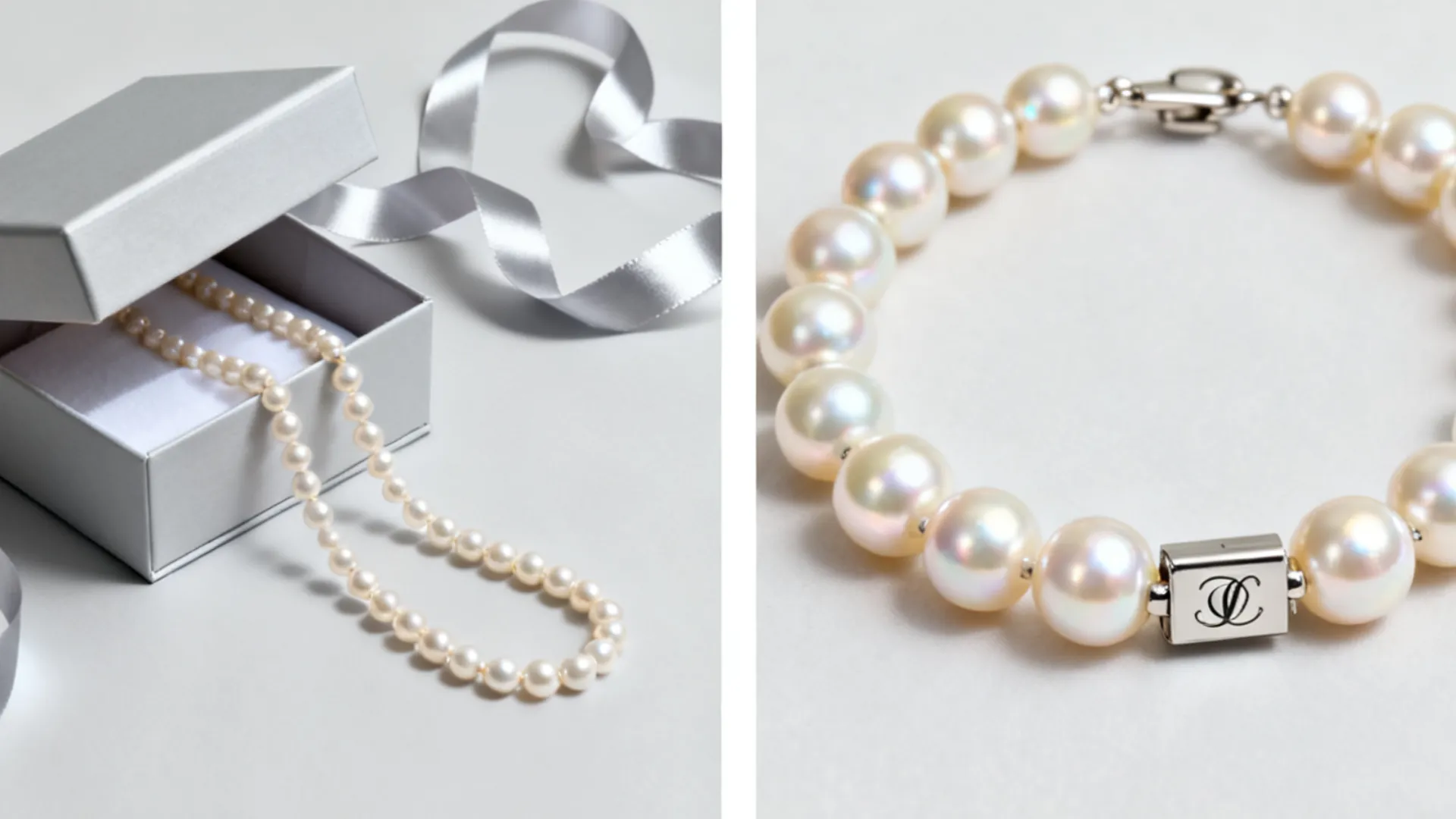
The Definitive Guide to Wholesale Custom Jewelry Boxes: From Branding to Budgeting
2025-10-08
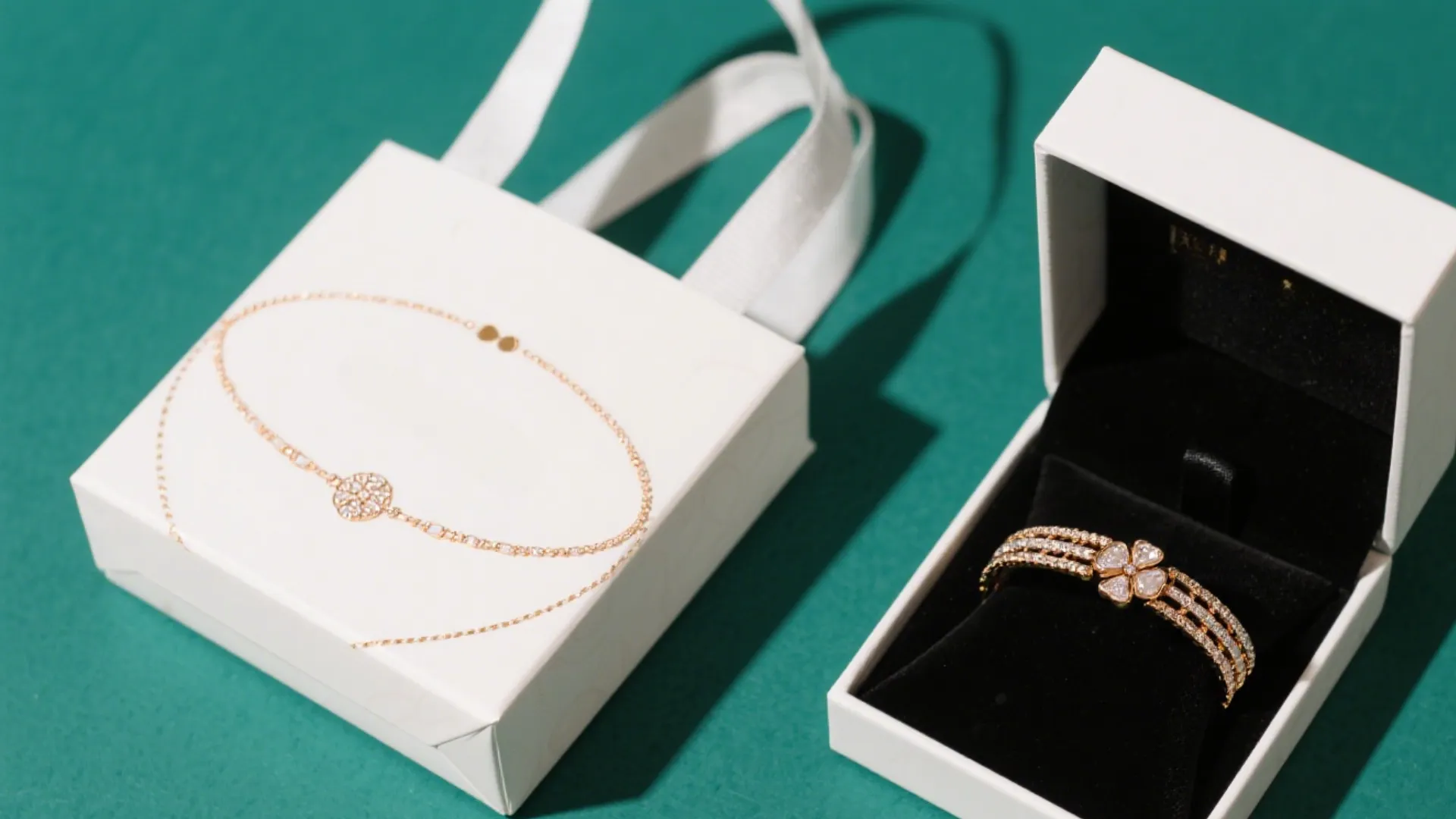
Making the right material choice for bulk bracelet jewelry boxes is a critical business decision. It’s a complex equation that directly influences your production costs, brand perception, and even your market access. For jewelry brands and wholesalers, a mistake in this area can lead to damaged products, budget overruns, and a weakened brand image.
This guide moves beyond simple material lists. We will provide a strategic framework for your procurement team, focusing on the core challenges of bulk purchasing. We’ll explore the data behind material costs, the nuances of production efficiency, and the non-negotiable sustainability requirements of the 2025 market. Our goal is to empower you to make informed, profitable, and brand-aligned decisions.
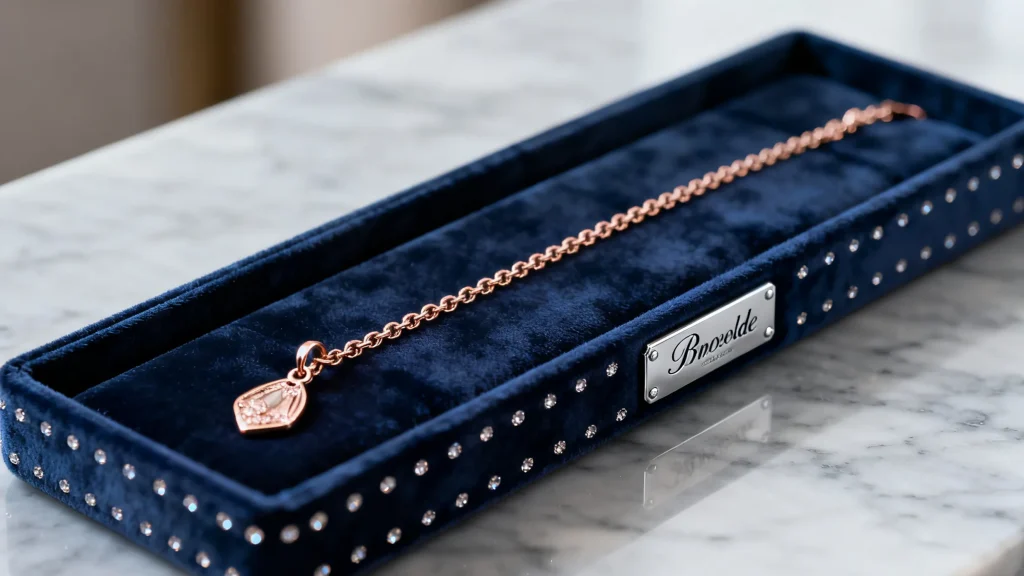
When ordering bracelet boxes by the thousand, every detail matters. The primary challenge isn’t just finding a beautiful material, but navigating the intricate balance between cost, manufacturing speed, and global environmental standards. Mastering this balance is essential for a successful and sustainable packaging strategy.
In jewelry box manufacturing, raw materials can constitute 60% to 70% of the total unit cost. This figure underscores why material selection is the most significant lever for budget control. The objective is not to simply find the cheapest option, which often leads to higher rates of product damage and negative customer reviews. Instead, the goal is to identify the “golden ratio” where the material provides the best possible quality, protection, and aesthetic appeal for its price point, thus securing your profit margin.
Your choice of material directly dictates the manufacturing process. For instance, injection-molded plastic boxes require a significant upfront investment in molds but offer rapid production cycles and high yield rates for large quantities. In contrast, solid wood boxes require extensive manual labor, leading to longer production cycles and higher costs. You must select a material that aligns with your timeline, order volume, and overall supply chain strategy to ensure timely delivery.
Environmental compliance is no longer optional; it is a prerequisite for global trade. Policies like the European Union’s Carbon Border Adjustment Mechanism (CBAM) and China’s “Dual Carbon” targets are creating green trade barriers. Using non-certified or non-recyclable materials can result in your products being rejected at customs or facing additional tariffs. Therefore, selecting materials with verifiable certifications like FSC is a critical step in risk mitigation.
To facilitate a data-driven decision, we have compiled a comprehensive comparison of the most common materials used in bracelet box production. This section acts as your central data hub for making an informed choice.
| Material | Unit Price (Bulk est.) | Pros | Cons | Eco-Index (1-5) | Recommended For |
| Paperboard | ¥5 – ¥30 | Cost-effective, highly customizable, lightweight. | Lower durability, moisture sensitive. | 4 (with FSC cert) | Eco-friendly, Fast Fashion, E-commerce |
| MDF w/ Veneer | ¥20 – ¥60 | High-quality appearance, strong, smooth finish. | Heavier, synthetic adhesives. | 3 (check E0 grade) | Affordable Luxury, Mid-to-High End |
| Solid Wood | ¥50 – ¥200+ | Premium, timeless, highly protective. | Expensive, heavy, slow production. | 4 (with FSC cert) | High Jewelry, Heritage, Luxury Brands |
| Plastic | ¥8 – ¥40 | Very durable, waterproof, versatile shapes. | Negative eco-perception, can look cheap. | 1 (unless recycled) | Mass Market, Modern, Travel-Focused |
| PU Leather | ¥35 – ¥100 | Luxurious texture, durable, vegan. | Not breathable, quality varies. | 2 | Premium, Fashion-Forward Brands |
| Bamboo-Plastic | ¥18 – ¥55 | Sustainable, unique look, durable. | Newer material, fewer suppliers. | 5 | Eco-Luxury, Natural & Organic Brands |
For brands aiming for a classic, luxurious feel, the choice often boils down to MDF with a veneer wrap versus solid wood. While solid wood offers unparalleled prestige, its high cost and long production lead times make it challenging for large-scale orders. MDF provides a robust and stable core that can be wrapped in a vast array of papers or wood-grain veneers, achieving a nearly identical visual effect at a fraction of the cost and with much higher production efficiency. This makes MDF the clear winner for achieving affordable luxury in bulk.
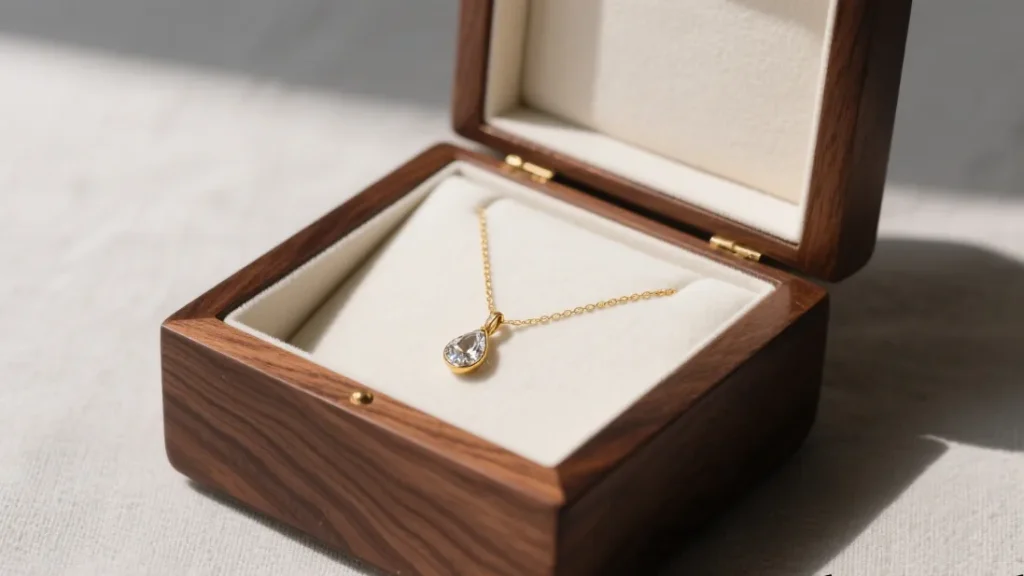
The global market for sustainable packaging is rapidly expanding, and bamboo-plastic composites are at the forefront of this trend. This innovative material combines the natural, renewable qualities of bamboo fibre with the durability of recycled plastics. It provides a unique, textured finish that stands out, offering a compelling story for brands focused on sustainability. This material perfectly balances environmental responsibility with the protective and aesthetic demands of modern packaging.
A theoretical understanding of materials is useful, but practical decisions are driven by budget. We’ve created a tiered strategy to guide your selection based on common per-unit cost targets.
When your target cost is under ¥20, a high-quality paperboard box is the most viable solution. To maximize perceived value, choose a rigid greyboard (at least 1.5mm thick) and pair it with a soft flocked plastic or fabric insert. A simple, elegant foil stamp for your logo will create a much more premium impression than a complex but low-resolution print, delivering a touch of luxury without breaking the budget.
This budget range opens up more premium options. Your decision should be brand-driven. If your brand story is rooted in sustainability and natural aesthetics, the unique texture and eco-credentials of a bamboo-plastic composite box are a perfect fit. If your brand leans towards classic elegance and a flawless finish, an MDF box with a specialty paper wrap and a magnetic closure offers a superior unboxing experience that feels exceptionally luxurious.
With a premium budget, the focus shifts to creating a truly lasting and memorable packaging experience. A PU leather-wrapped box offers a sophisticated, tactile feel that immediately signals high value. For the pinnacle of luxury, consider high-end solid woods like walnut or cherry, which transform the box from mere packaging into a cherished keepsake, reinforcing your brand’s prestige long after the purchase.
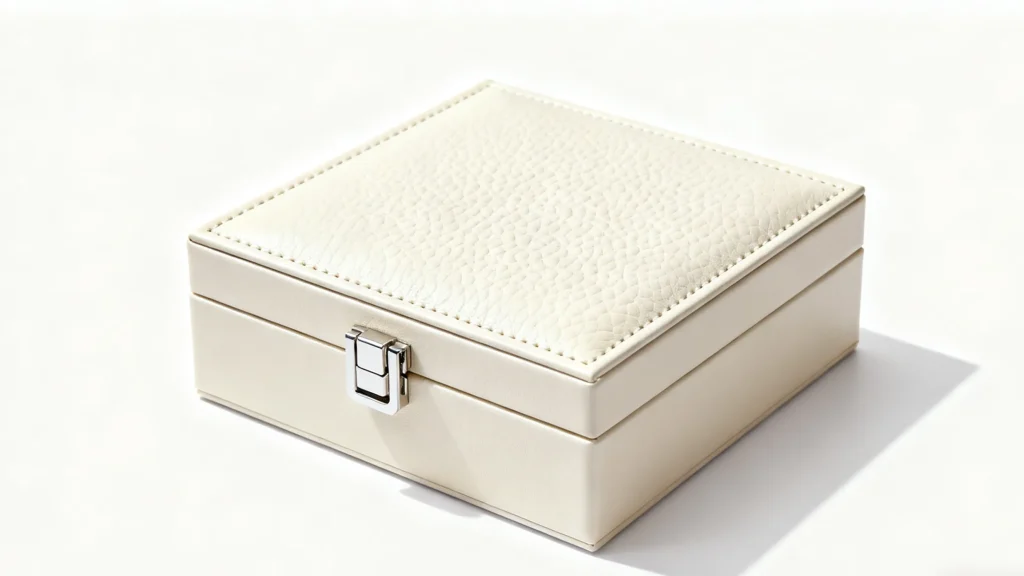
Bracelets present unique packaging challenges due to their size, shape, and materials. Unlike rings or earrings, they are often bulky, rigid, and susceptible to specific types of damage. A generic jewelry box is often insufficient.
Many bracelets, such as cuffs and wide bangles, have a significant volume and cannot be laid flat. The box structure must be rigid enough to withstand pressure during shipping and storage. A drawer-style or hinged-lid box made from thick MDF or high-density paperboard offers better structural integrity than a standard two-piece box. Inside, using removable or adjustable inserts ensures that bracelets of different sizes can be accommodated securely.
To prevent scratches and impact damage, the choice of interior lining is crucial. While soft materials for bulk bacelet jewelry boxes fabrics like velvet feel luxurious, the underlying cushion does the real work. High-density EVA foam is technically superior to standard polyurethane sponge for shock absorption. Its closed-cell structure provides firm support and prevents the bracelet from moving, which is essential for protecting delicate gemstones or intricate metalwork during transit.
For bracelets made of sterling silver or other metals prone to tarnishing, standard materials can accelerate discoloration. The solution lies in using specialized materials. You can specify an anti-tarnish fabric lining for the interior, which is treated with compounds that absorb airborne sulphur particles. Additionally, materials like solid wood and bamboo-plastic have natural moisture-wicking properties, creating a more stable micro-environment inside the box compared to paper-based products.
Choosing the right materials on paper is one thing; ensuring they are executed perfectly across thousands of units is another. Mitigating risks during bulk purchasing is paramount to protecting your investment and timeline.
Every custom packaging project comes with an MOQ, which is the minimum number of units a factory will produce in a single run. This figure is critical for calculating your total investment. For unique structures or plastic components, there will also be a one-time mold fee. It’s important to amortize this fee across your planned order volume to understand the true cost per unit.
Consistency is the hallmark of quality in bulk production. Issues like glue residue, peeling veneers, or colour variations can render an entire batch unusable. When using MDF, for example, specifying E0-grade board ensures the lowest level of formaldehyde emissions, which is both a quality and safety standard. Working with a manufacturer that has a documented Quality Management System (QMS) is the best way to ensure stability and avoid common defects.
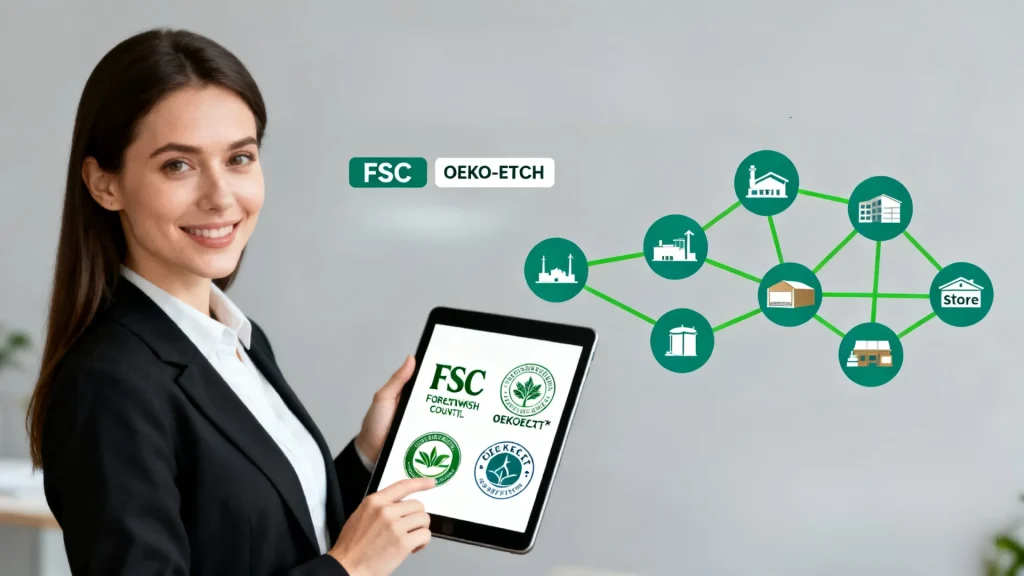
In 2025, environmental certifications are your passport to international markets. Possessing an FSC (Forest Stewardship Council) certificate for your paper and wood products is no longer a “nice-to-have”; it’s a requirement for many major retailers and regions. Likewise, OEKO-TEX® certification for textiles ensures your linings are free from harmful chemicals. These certifications de-risk your supply chain and serve as powerful, trustworthy signals to your customers.
To make your decision even easier, here are our top material combinations tailored to specific brand strategies.
While the provided analysis expertly breaks down the per-unit cost of materials, a senior-level procurement strategy must evolve from unit price to a Total Cost of Ownership (TCO) model. This framework expands the financial analysis to include downstream expenses that are directly influenced by the initial material choice. For instance, heavier materials like solid wood or dense MDF significantly increase freight and logistics costs, particularly for air freight, where dimensional weight is a critical factor. Furthermore, a TCO analysis must quantify the financial impact of in-transit damage rates. A cheaper paperboard box might have a 3-5% damage rate on a large shipment, incurring costs related to product replacement, return shipping, and customer service labor. By modeling these variables, you may find that a mid-priced, more protective MDF box offers a lower TCO and higher ROI than the cheapest-to-produce alternative, safeguarding not only the product but also the profit margin and brand reputation.
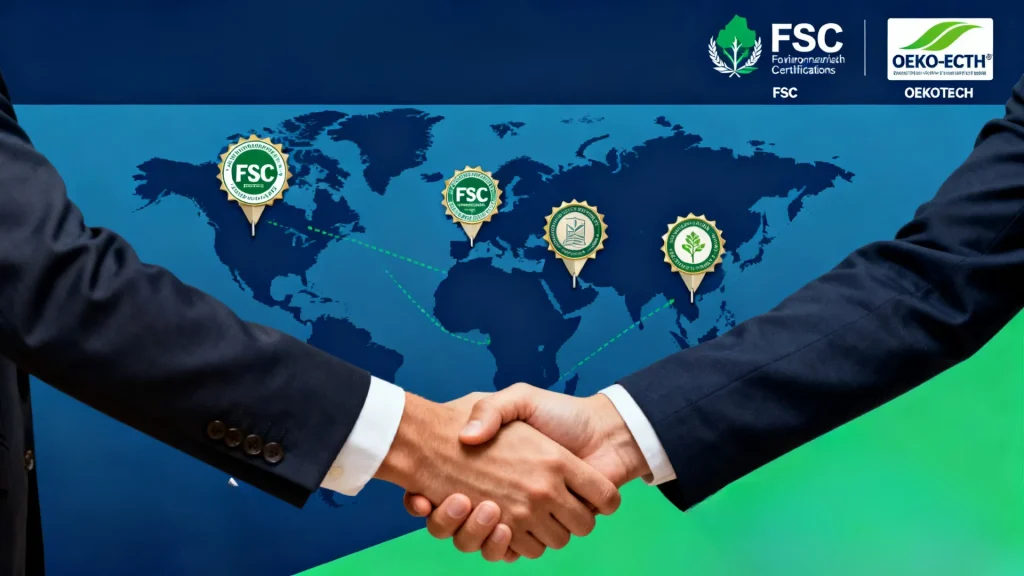
Integration Mitigating bulk production risk requires a shift from reactive quality control to proactive quality assurance, embedded early in the material selection process. Before committing to a large order, brands should mandate a series of standardized material and structural tests. This includes humidity-controlled aging tests to check for veneer peeling or paper warping, calibrated drop tests from various heights to simulate shipping conditions, and abrasion resistance tests for logos and finishes.
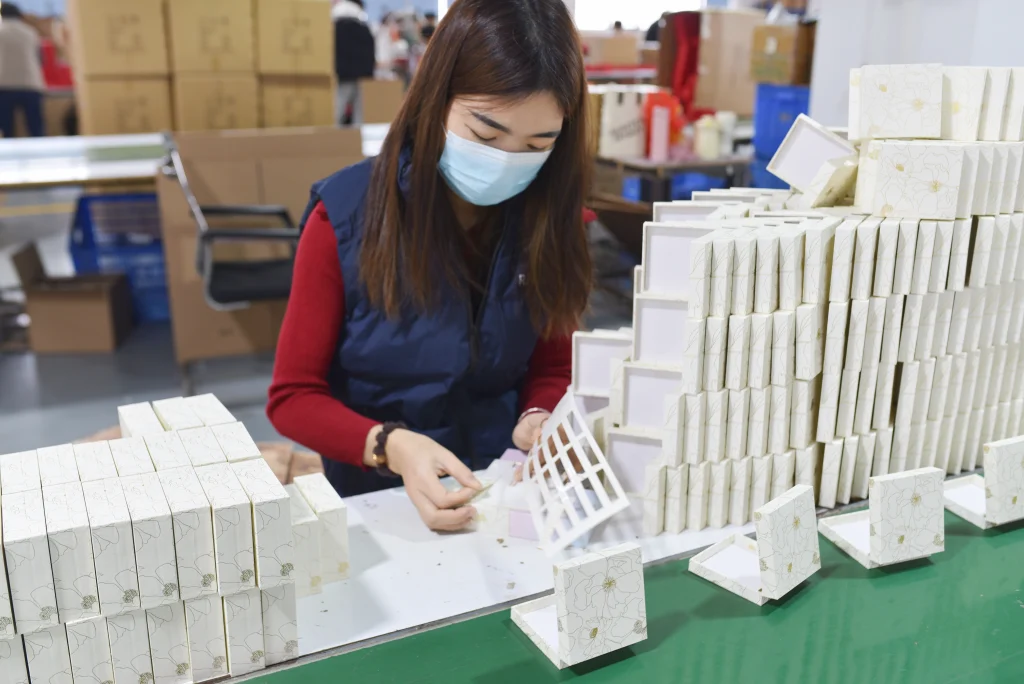
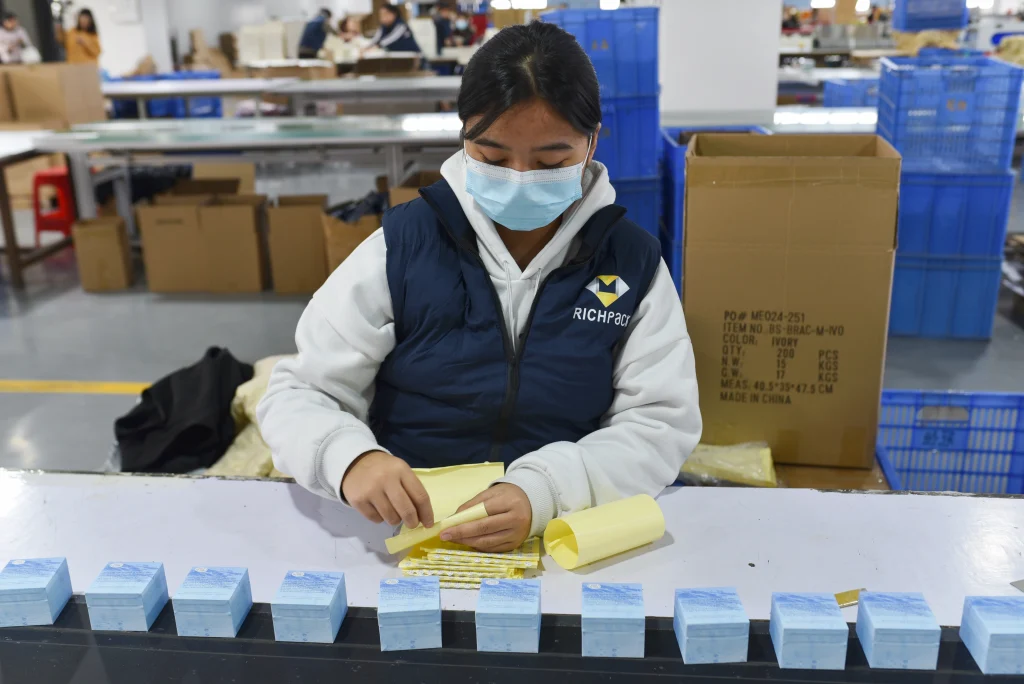
Sharing these testing protocols with potential suppliers serves as a powerful vetting tool, distinguishing experienced manufacturers from those who lack rigorous process controls. The most effective strategy involves treating the supplier not as a vendor but as an integrated partner. Involve them in the design phase to leverage their expertise on Design for Manufacturability (DFM), which can identify potential production issues and cost-saving modifications before any molds are cut or materials are ordered.
Resilience Looking beyond the 2025 compliance landscape, a forward-thinking strategy involves actively investing in material innovation and supply chain diversification. The current discussion of bamboo-plastic is excellent, but leading brands are already piloting next-generation materials like molded mycelium, compressed agricultural fibers (bagasse), and high-end recycled textiles. Engaging with material science labs and innovative suppliers provides a competitive advantage, allowing your brand to lead the market in sustainability rather than merely reacting to regulations. Simultaneously, the geopolitical and climate-related disruptions of recent years have highlighted the fragility of single-source supply chains. A resilient strategy involves qualifying at least two different material options and two geographically distinct suppliers for your core packaging needs. This redundancy ensures business continuity, mitigates the risk of price volatility, and provides the operational agility required to navigate an increasingly unpredictable global market.
The world of packaging is constantly evolving. As you finalize your material decisions, it’s vital to look ahead. Three major trends will shape the future of jewelry packaging: the continued adoption of sustainable materials, the rise of deep personalization, and the integration of smart functionalities. Your choice today should not only meet your current needs but also position your brand for the demands of tomorrow. By prioritizing sustainable, high-quality, and brand-aligned materials like Richpack jewelry packaging solution, you are investing in a future where your packaging is as valuable as the jewelry it holds.
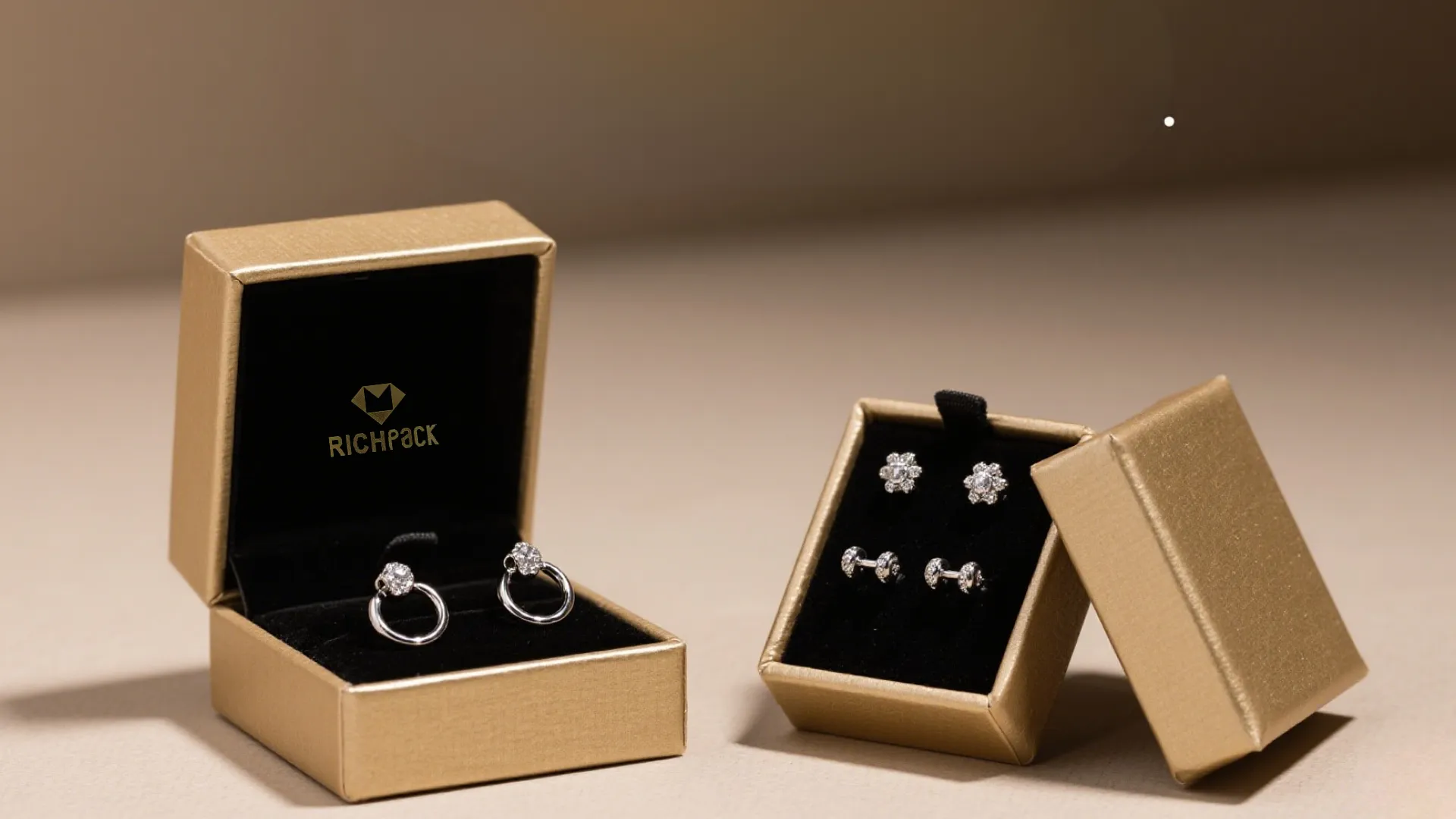
Sarah Miller, a boutique helix jewellery shop owner, almost lost a $300 helix jewellery gold order last month when her fragile helix body jewellery arrived scratched in flimsy packaging – the heartbreak every artisan jewellery seller fears. This painful moment reveals a vital truth: helix jewellery stud deserves protection as exquisite as its craftsmanship. Let’s… Continue reading How to Pick Materials for Bulk Bracelet Jewelry Boxes: The Ultimate Guide
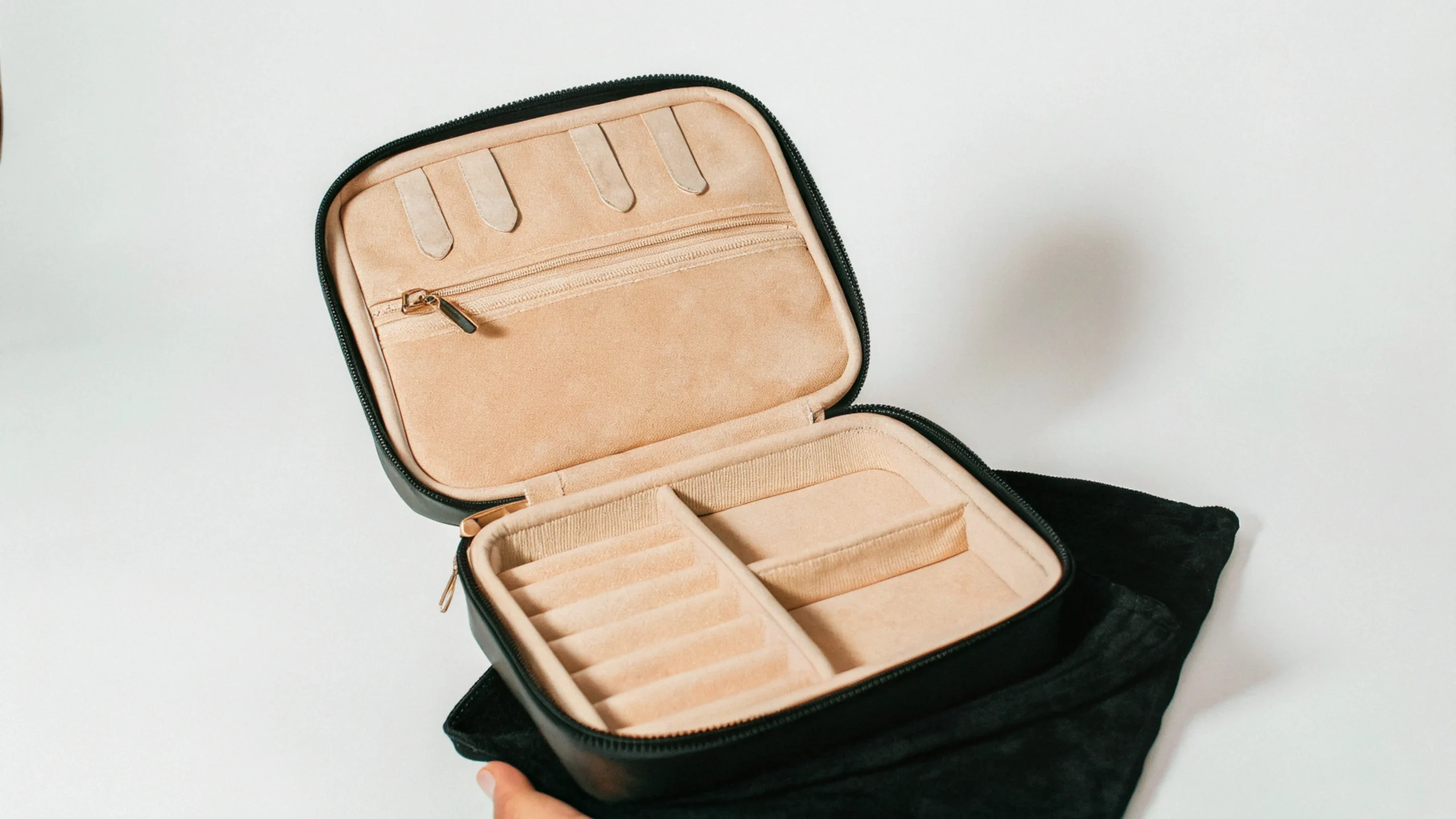
Packing for a trip is always a puzzle—how do you fit everything you need while keeping it neat and organized? Clothes, shoes, toiletries… but what about jewelry? Nothing ruins a morning faster than finding your necklaces tangled in a mess or realizing you’ve lost one earring in the depths of your suitcase. That’s where a small… Continue reading How to Pick Materials for Bulk Bracelet Jewelry Boxes: The Ultimate Guide
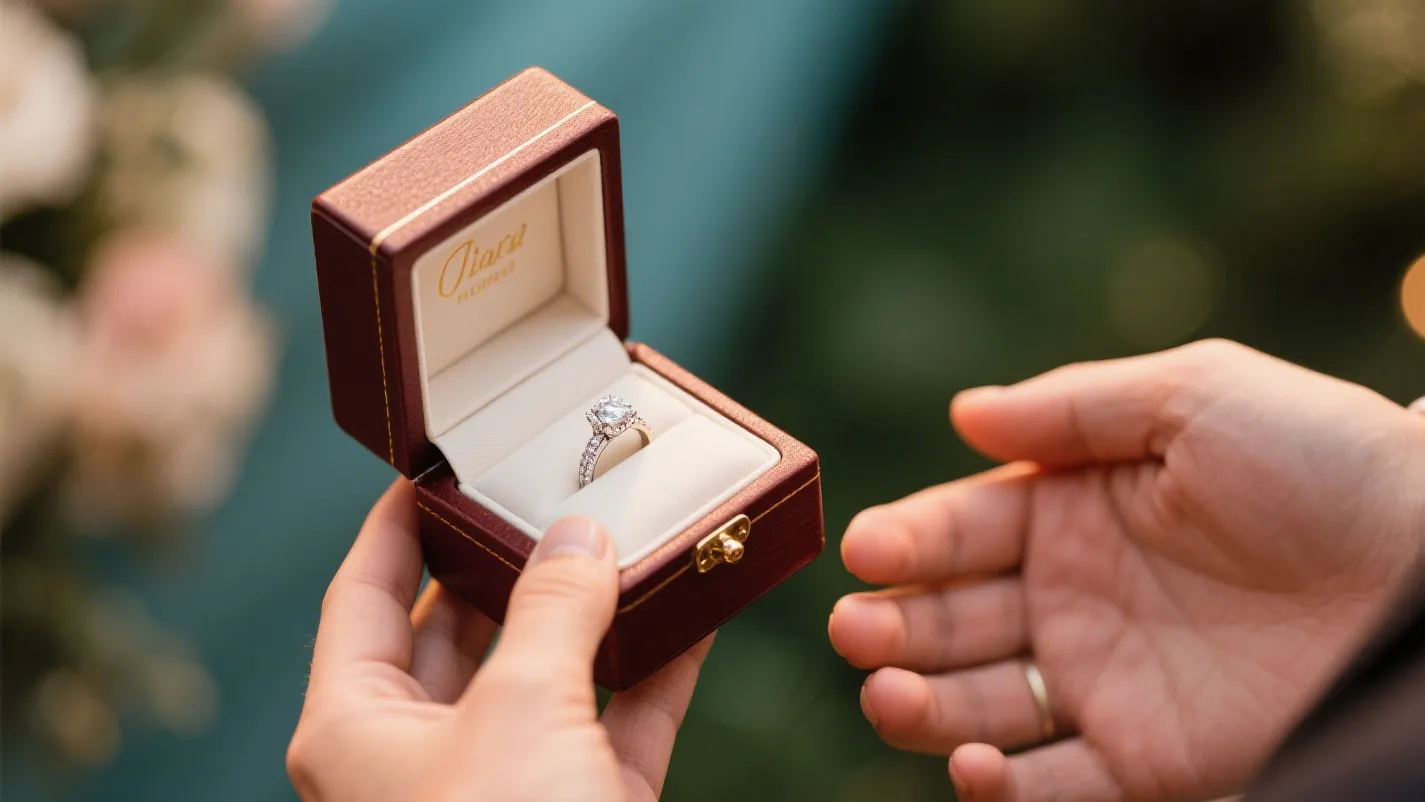
Wondering how much custom packaging costs for your jewelry brand? It’s the most common question we’ve answered in our 15 years as specialist jewelry packaging providers. The truth is, it ranges from under a dollar to over $25 per box. This guide breaks down every factor—from materials to finishes—and shows you how to create stunning… Continue reading How to Pick Materials for Bulk Bracelet Jewelry Boxes: The Ultimate Guide
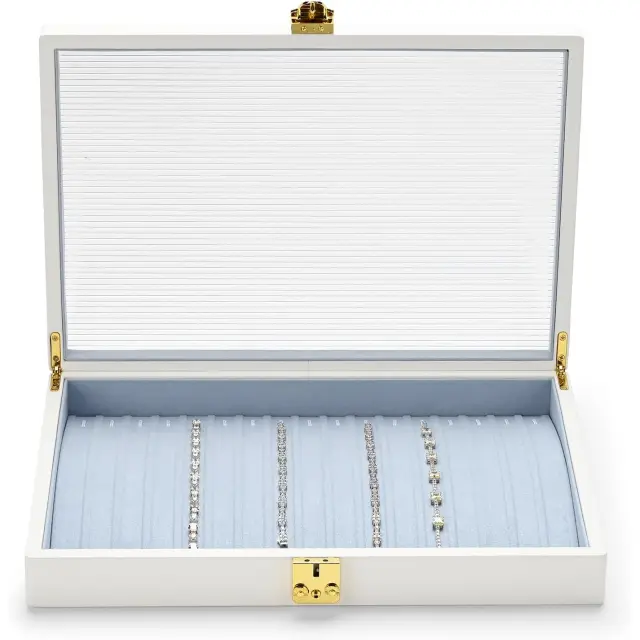
Lockable Jewelry Box | Custom Secure Jewelry Packaging – Richpack
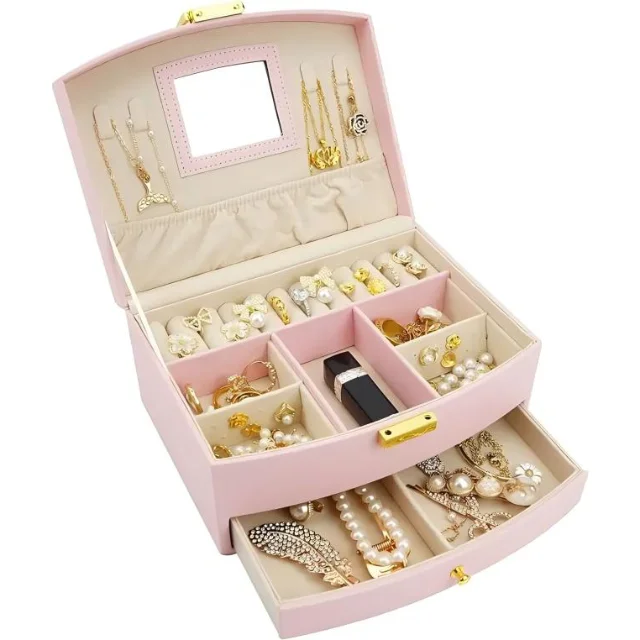
Premium-Quality Drawer-Style Jewelry Boxes I Featuring Customizable Exteriors & Soft Linings
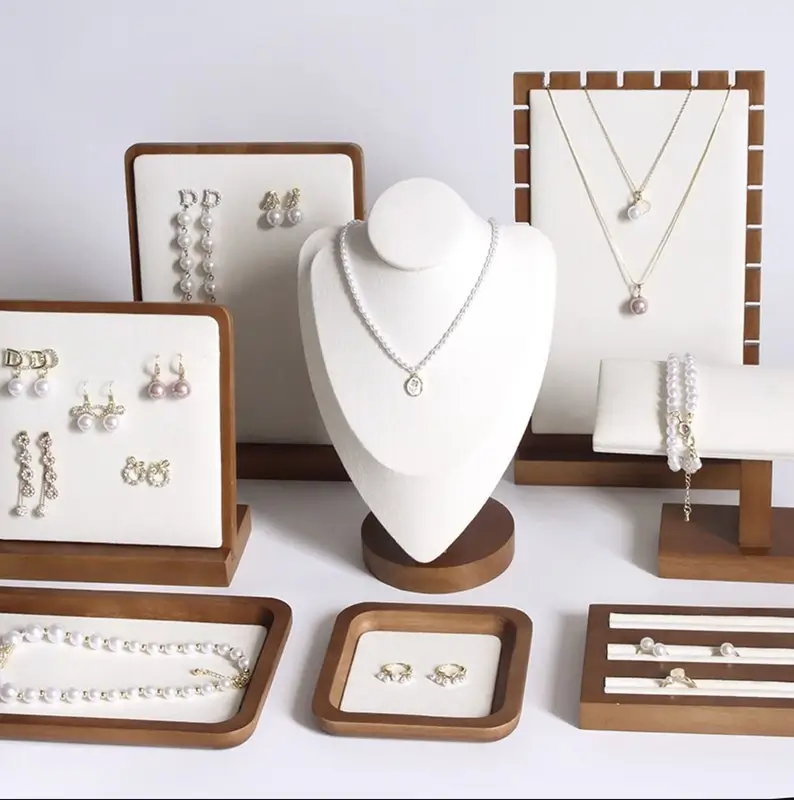
Richpack Sturdy Durable Custom Jewelry Display Cases for Bulk Orders | Built for Jewelry Manufacturers Requiring Consistent and Reliable Packaging
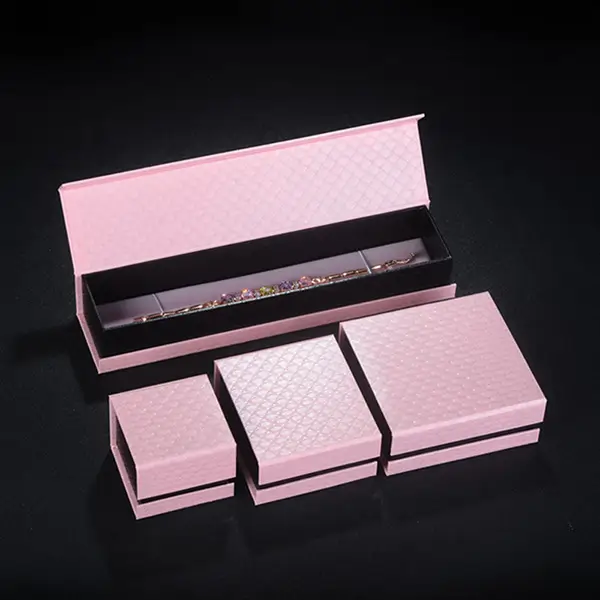
Affordable Custom Jewelry Boxes for Independent Jewelers | Budget-Friendly Solutions with High-Quality Designs
View More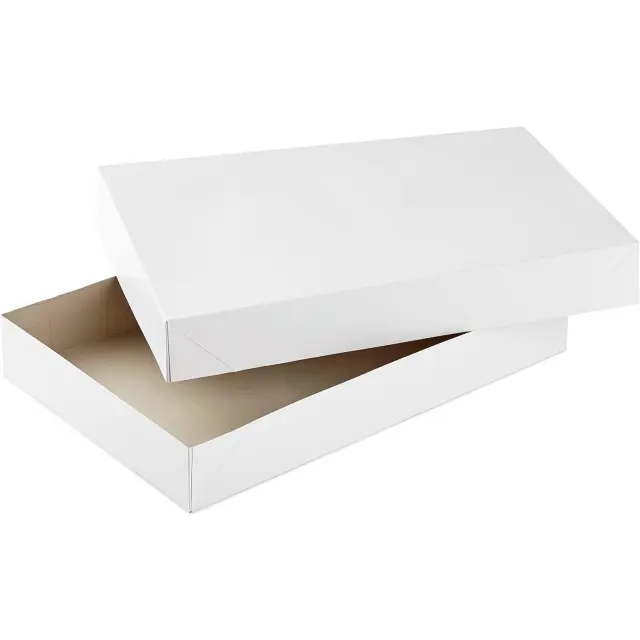
Christmas Gift Boxes White | Elegant Holiday Packaging Solutions – Richpack
View More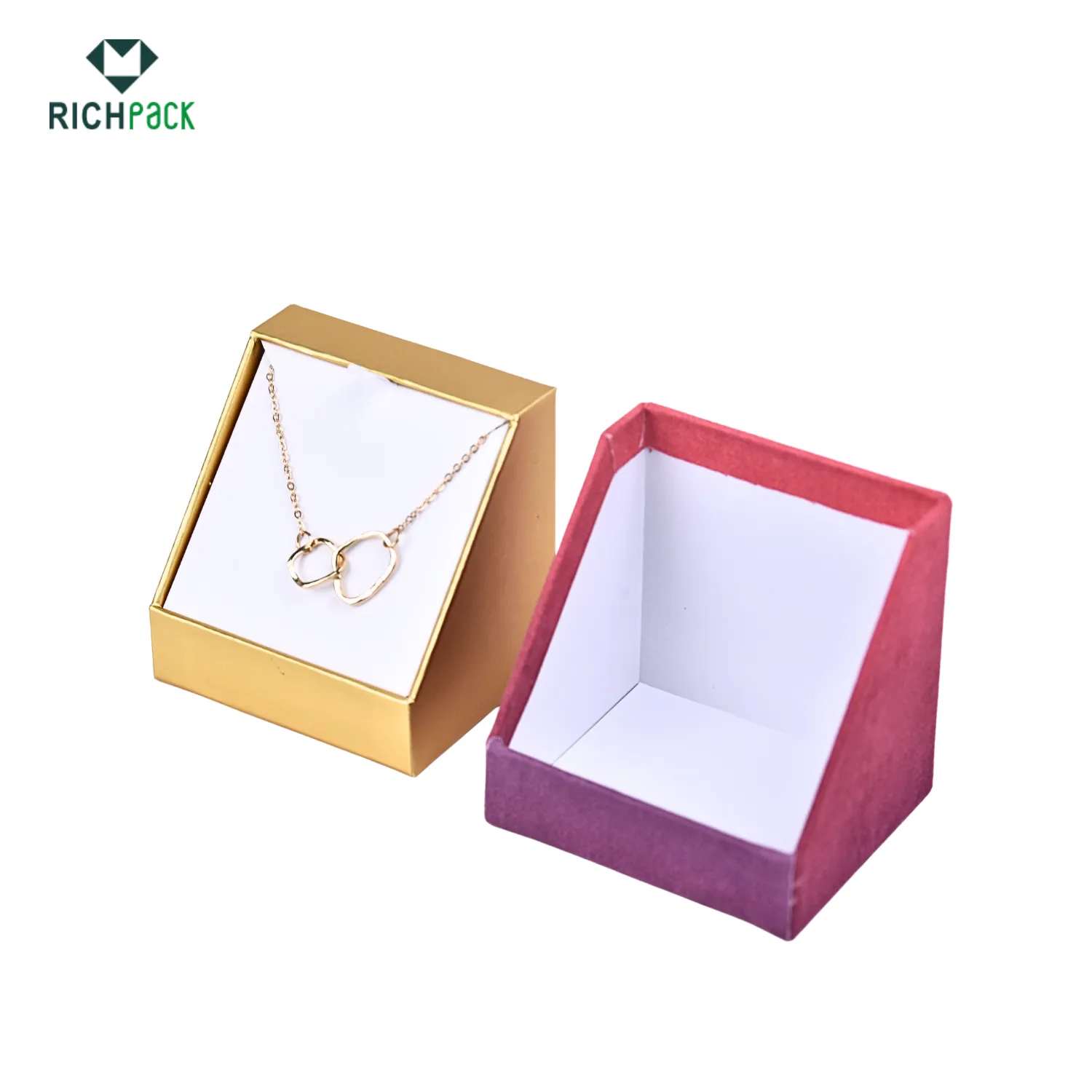
Green Large Volume Eco-Friendly Packaging for Jewelry Suppliers | Ideal for Wholesalers Seeking Sustainable and Cost-Effective Bulk Packaging
View MoreJust submit your email to get exclusive offers (reply within 12 hours)